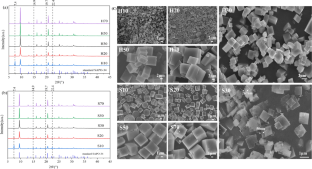Controlled synthesis of high performance SAPO-34 with sheet-like morphology and small particle size using concentrated gel system
Abstract
A strategy was devised for the synthesis of SAPO-34, which involved a concentrated gel system-assisted two-step crystallization method. This strategy effectively controlled the size and morphology of SAPO-34. The successful synthesis of SAPO-34 crystals with micron-scale cubic morphology and nano-scale sheets were achieved using triethylamine as a low-cost template. The paper thoroughly examined the growth evolution that occurs during the crystallization process, and it delved into the factors such as gel concentration and crystallization conditions in the synthesis. Furthermore, potential theories regarding nucleation and growth mechanisms were suggested. A systematic study was conducted to examine how the morphology and acidity of SAPO-34 zeolites impact their catalytic performance. The results confirmed that the SAPO-34 with low silicon content and lamellar structure was successfully synthesized through a two-step crystallization within a gel system of H2O/Al2O3 = 30, with a thickness of approximately 50–300 nm. SAPO-34 nanosheets demonstrated a substantial enhancement in catalytic performance, with a catalytic life of 370 min and an 84.1% selectivity towards light olefins.


 求助内容:
求助内容: 应助结果提醒方式:
应助结果提醒方式:


